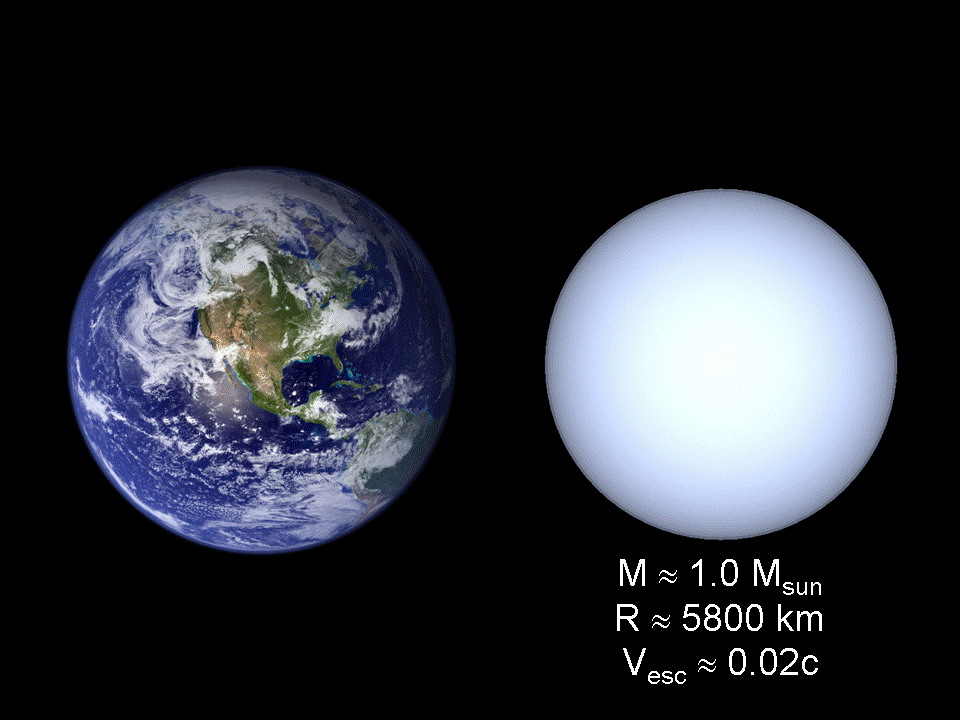
The Final Days
As discussed at the end of the giants section, stars can become several different things as they approach the end of their days. Below is an overview of each of these paths.
White Dwarf
After collapsing as a red giant, if the mass of the remnant is below 1.44 solar masses the star will continue to collapse until the electron degeneracy forces a balance with the force of gravity, leaving only the core of the star, it has now become a white dwarf. Electron degeneracy is simply the application of the Pauli Exclusion Principle which states that no electron can occupy the same energy level.
Within a white dwarf no fusion is taking place, as the core is a mixture of carbon and oxygen. The star’s luminosity is a result of the star cooling, as no new radiation is being produced. Eventually the star will become so cold, that its luminosity will fade as the star runs out of radiation. It will then become classified as a black dwarf, invisible and forgotten, to almost all observable tools.


After a supergiant has exploded in a spectacular supernova, one of two things can happen. The remnant will either be of such low mass that it forms a neutron star, or high enough mass that it collapses once more and becomes a black hole.
A neutron star comes as a result of the remnant being between 1.4 and 3 solar masses. The remnant collapses forming an incredibly dense rotating core made almost entirely of neutrons. Hence the name, neutron stars. Happening simultaneously neutrinos are produced in vast quantities that provide excessive amounts of energy to the outer layers. Eventually the energy in the outer layers becomes unstable and explodes out into space providing new protons, and energy to the ISM. This explosion is called a supernova.
The remaining neutron star is incredibly dense and continues rotating at tremendous speeds. Neutron stars are often associated with pulsars, and quasars.
Should the remnant be of a mass higher than 3 solar masses, the gravitational force is so high that the core becomes denser and denser until it implodes, forming a black hole. The black hole will then begin sucking everything in that comes within the reach of its exceptionally powerful gravitational field.
Supernovae happen unimaginably fast, often over the course of several days, as oppose to the millions of years it takes for the other stages of the cycle to occur.

